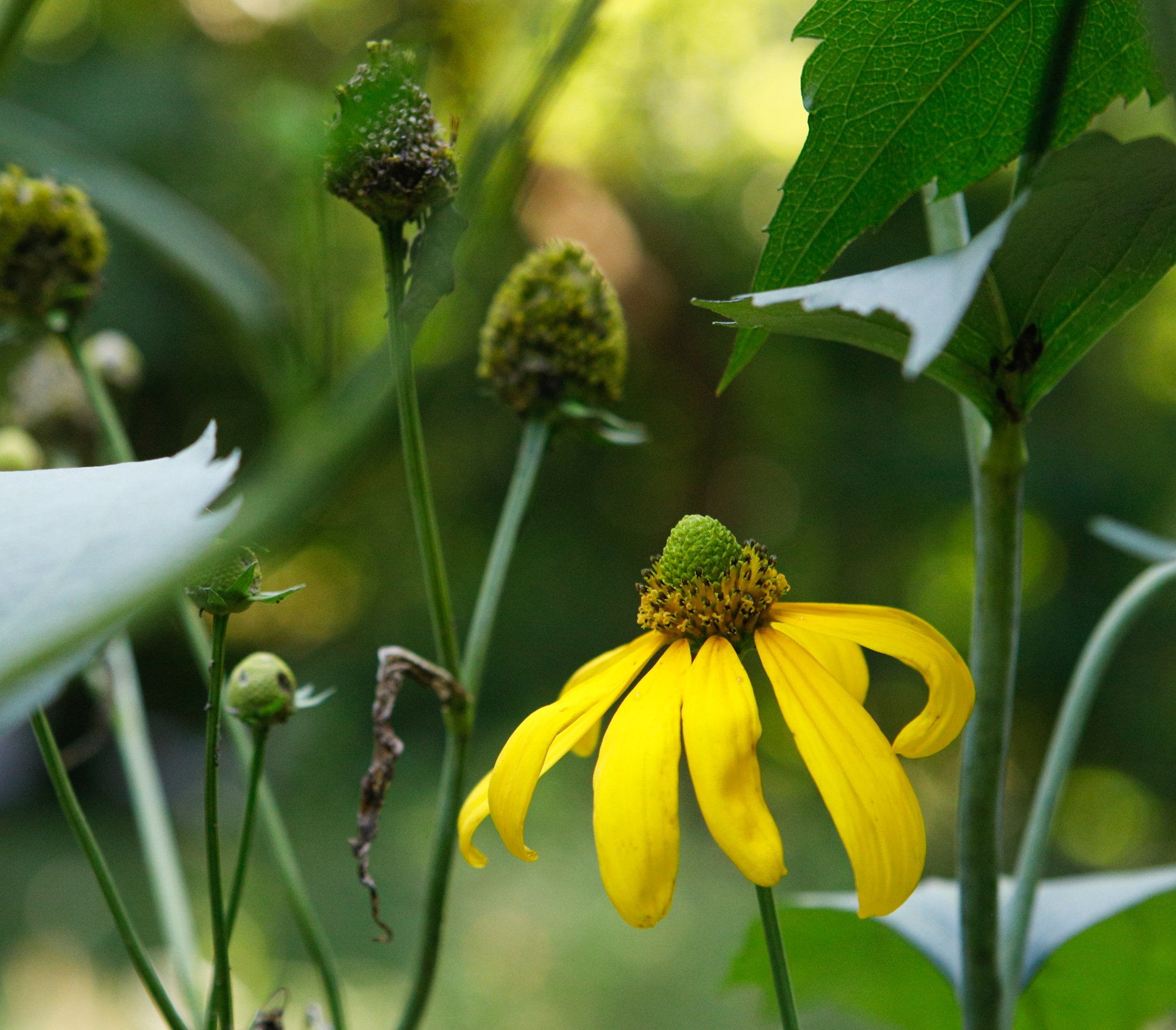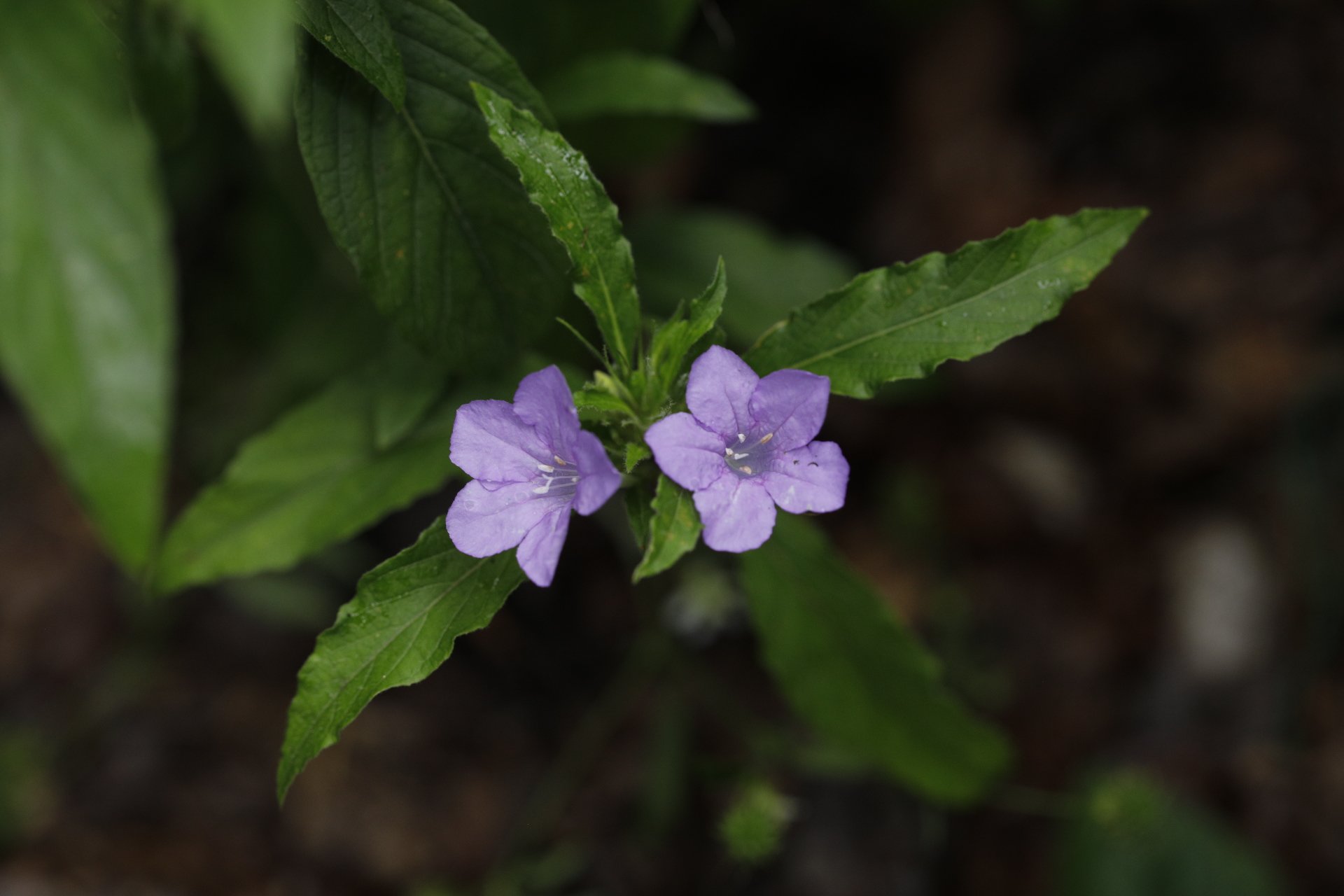Invasive Free-Nurseries?
How to Get From Here to There
In 2023 you can identify popular trends in the nursery industry when considering the following catchphrases:
Plants for wildlife, native plants, rewilding gardens, pollinator gardens, going green, biodiversity, habitat loss, backyard habitat, wildflower meadows, garden for wildlife. These topics, and many more, reflect the growing consumer demand for native plant species and know-how.
With all of this buzz it is easy to overlook one of the biggest challenges home gardeners face - the invasive species that are taking over our yards and neighborhoods and consequently, threatening the ecological health of the Carolina Foothills and beyond.
What is the difference between native and invasive species?
Species native to North America are generally recognized as those occurring on the continent prior to European settlement. They have evolved a broad array of adaptations in the wild to make them more resilient to fluctuations in climate, better adapted to match the needs of insect pollinators and populations, and best suited to support complex ecological functions.
A species is considered invasive when it is found thriving outside its native range and out-competing species native to the local ecosystem. Invasive species threaten the survival or reproduction of native plants or animals and threaten to reduce biological diversity. What comes to mind? Kudzu, English Ivy, Tree of Heaven, Chinese Privet, and so many more.
What are the costs to our communities, to wildlife, and to the planet?
The far-reaching impacts of invasive species include loss of biodiversity, threats to fragile wildlife species, effects on property values, agricultural productivity, utility operations, native fisheries, tourism, outdoor recreation, and too, the financial and environmental costs associated with invasive species control efforts. A 2005 study estimated that the economic damages associated with invasive species in the United States reached approximately $120 billion a year.
In terms of threatened species, in a new report an international panel of scientists declared 21 species officially extinct, all in the U.S. The primary reasons for this loss and the threat to other vulnerable species are destroyed habitat, invasive species, pollution, climate change and exploitation.
“Many introduced plants have become naturalized in North Carolina. Some of these have become invasive, replacing our native plant species. Our native fauna, including insects, birds, mammals, reptiles, fish and other animals, are dependent on native plants for food and shelter. Native plant loss due to the spread of invasive non-native plants poses a serious disruption to natural ecosystems in North Carolina and around the world.”
Where do most of these invaders come from?
The global trade in ornamental nursery stock is the dominant pathway by which invasive alien plants have been introduced worldwide.
Read: Study finds plant nurseries are exacerbating the climate-driven spread of 80% of invasive species
Yes, even Kudzu was introduced and marketed as a solution to agricultural woes. Garden centers often promote and sell these species given their tough-as-nails properties and the “easy gardening solutions” they offer. Homeowners then enthusiastically take them home and plant them. Most people have no idea of the harm that they are doing.
The best way to avoid the invasive plant problem is to stop it from the beginning:
As a home gardener do not purposefully introduce plants known to be invasive into your garden or yard.
As a retail garden center do not purposely sell plants known to be invasive to the region.
We know it’s not that easy, and there is a learning curve for both buyers and sellers. The good news is that many folks already are embracing habitat healthy gardening, and many sellers now have an ever-expanding list of quality native plants from which to course.
What are the invasive plant species of greatest concern in the Carolinas?
The biggest offenders have been identified in the NCNPS Invasive Plant List and are identified as Rank I (severe threat) or Rank 2 (significant threat). This list was originally compiled with biologists from the following agencies: NC Natural Heritage Program, NC Botanical Garden, University of North Carolina Herbarium, NC Exotic Pest Plant Council, NC DENR Aquatic Weed Control Program, US Fish & Wildlife Service, The Nature Conservancy, and the NC Zoo.
While many of the identified species are not currently available through the retail nursery trade, many are. Examples include invasive varieties of Wisteria, Privet, English Ivy, Lespedeza, Loosestrife, Spiraea, Burning Bush, Butterfly Bush and aggressors like Mahonia, Nandina and Periwinkle.
What are some hardy, commercially available alternatives to address home landscaping needs?
Here are a few good references to get you started on your hunt for native alternatives:
SC Native Plant Society Native Plant Alternatives
MountainTrue - Smart Plant Buying Guide
NC State Extension - Landscaping for Wildlife with Native Plants
To explore more about invasive plants and their far superior native species options visit the GFLP Learning Center.










